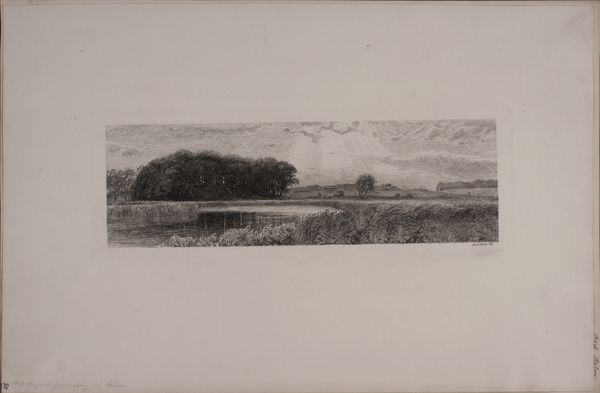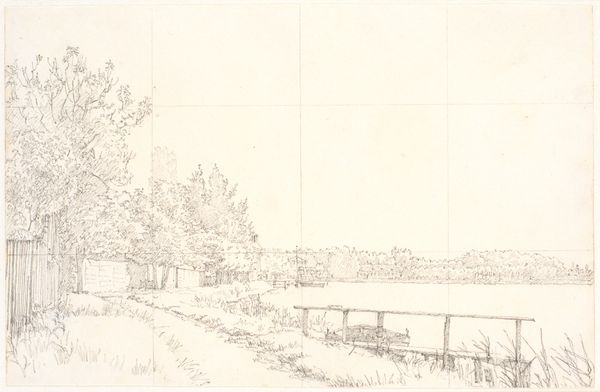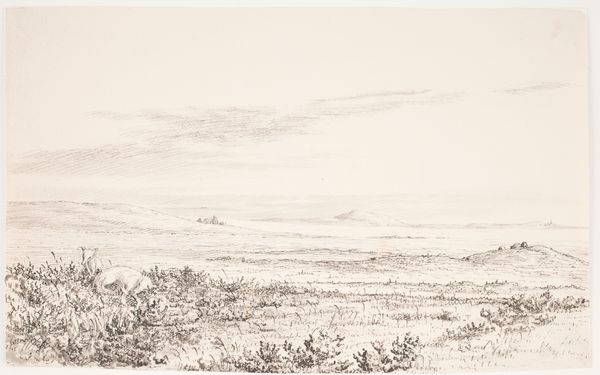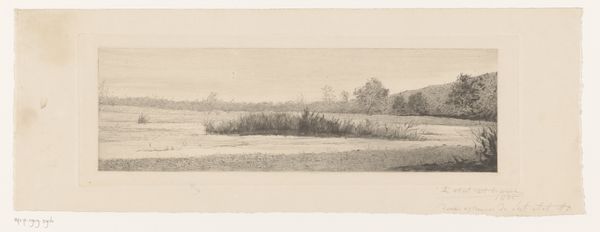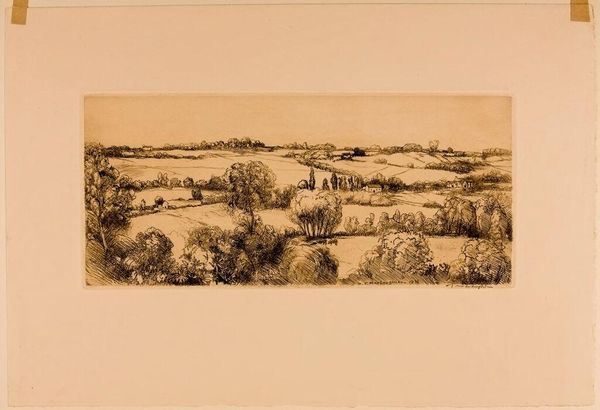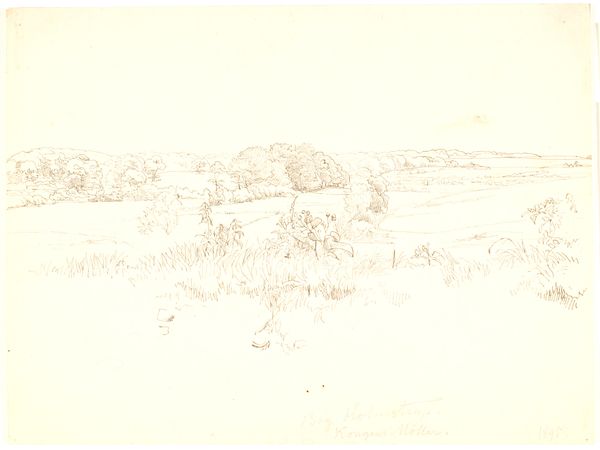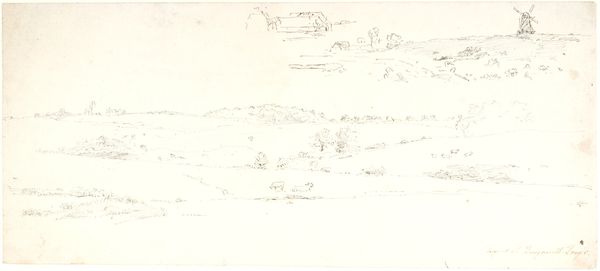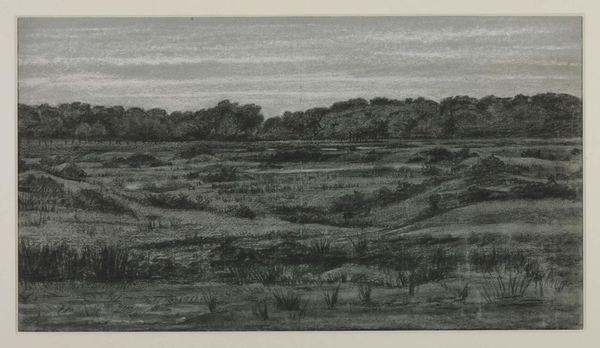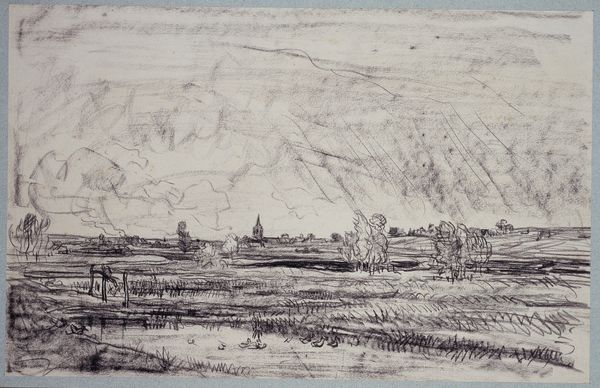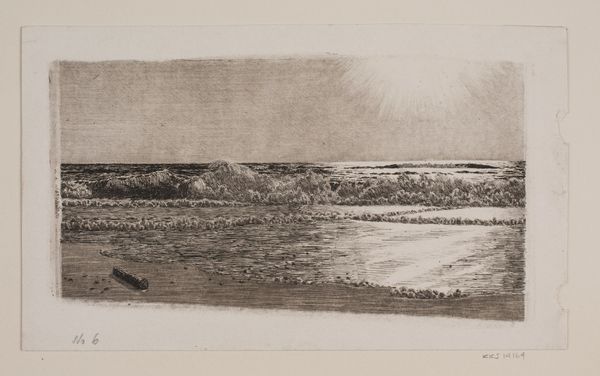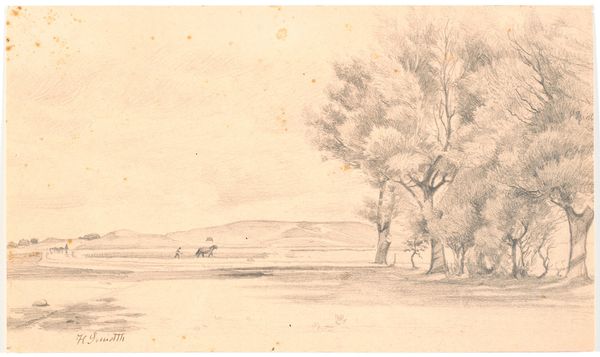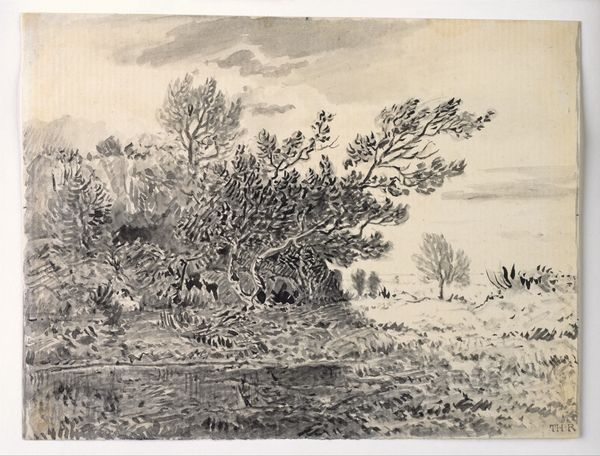
Copyright: Public Domain
Editor: This delicate pencil drawing, "Wiesenlandschaft mit Bäumen, Sträuchern und Bach," by Wilhelm Busch, dates back to around 1880. It feels quite peaceful, almost dreamlike, given its soft, muted tones. What do you see in this piece, particularly in the context of its time? Curator: The emotional cadence is definitely carried by what’s not shown, almost more than what is. Think about the broader cultural context – the late 19th century was a time of rapid industrialization, but Busch retreats into this idyllic scene. This retreat speaks volumes, doesn't it? What sort of yearnings might be captured here? Editor: A yearning for a simpler time, perhaps? A rejection of the modern world encroaching upon nature? Curator: Precisely. Busch uses the established symbols of Romanticism - the untouched landscape, the subtle suggestion of water – to evoke that longing. The sketch, almost like a memory, becomes a repository for a collective cultural desire for what is being lost. Consider, too, the medium: pencil on paper. Humble materials to convey, however effectively, great cultural angst. Editor: It's fascinating how something so seemingly simple can carry such a complex weight. It makes you wonder what elements within art become iconic signifiers over time. Curator: Indeed. Art builds upon a shared understanding, layer upon layer, making the visual landscape rich with echoes and cultural memories. Perhaps these gentle curves hint at other familiar renderings, now, as well? Editor: This has deepened my appreciation for how art acts as both a reflection of and a refuge from the world around it. Curator: And hopefully you begin to appreciate just how carefully our symbols communicate for us. The personal, yes, but, overwhelmingly, the collective unconscious is rendered visually, time and time again.
Comments
No comments
Be the first to comment and join the conversation on the ultimate creative platform.
